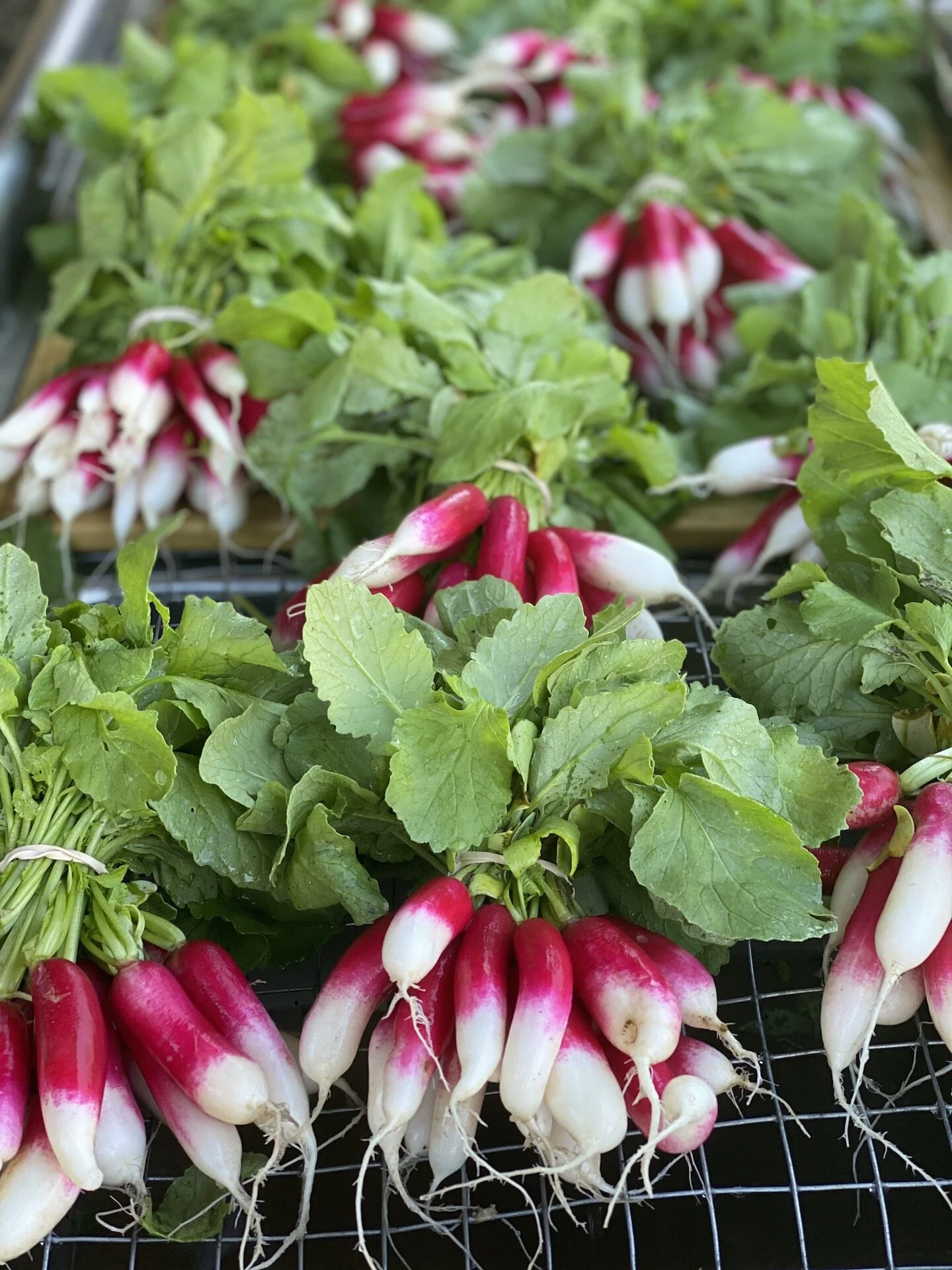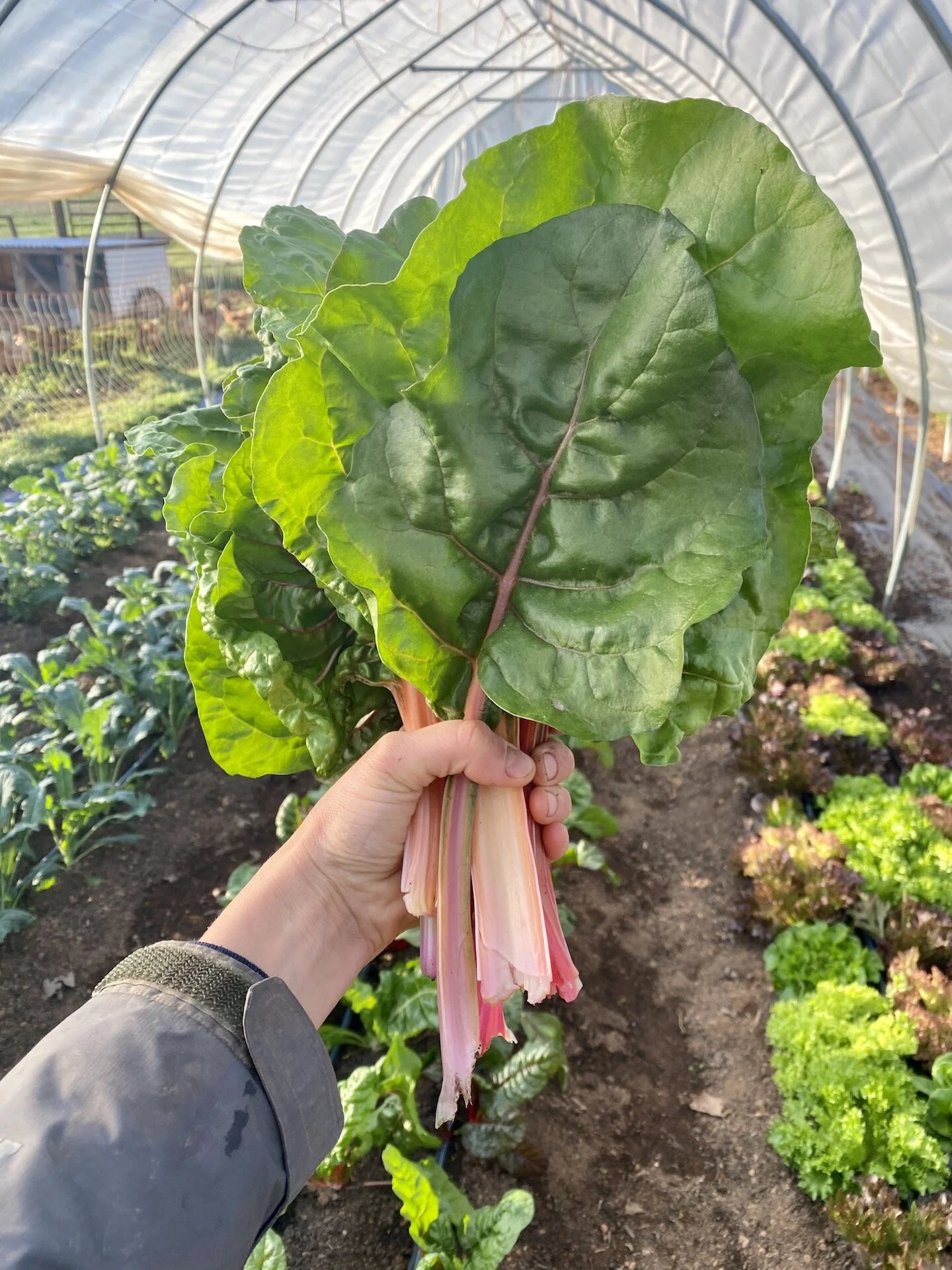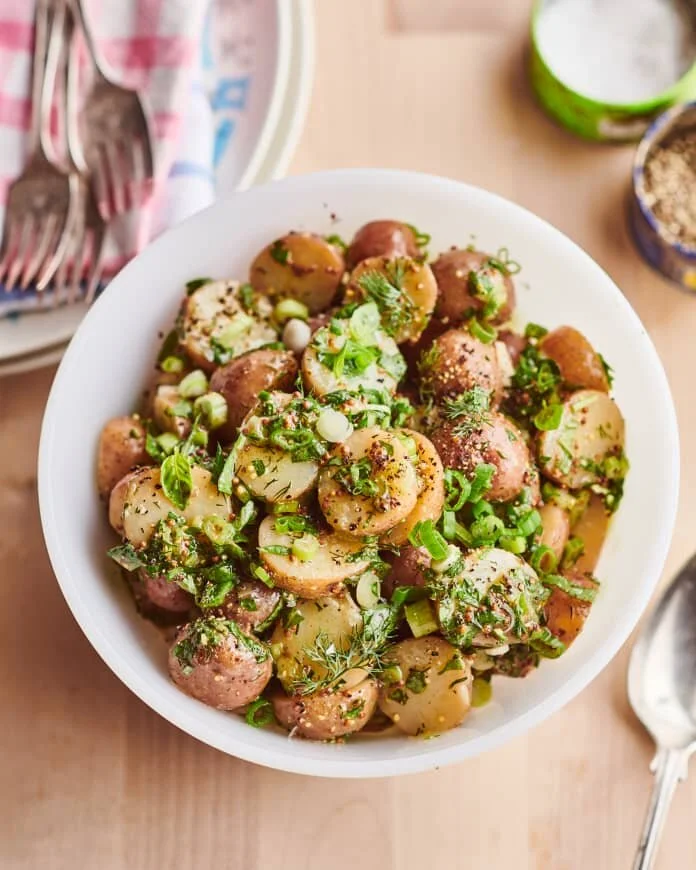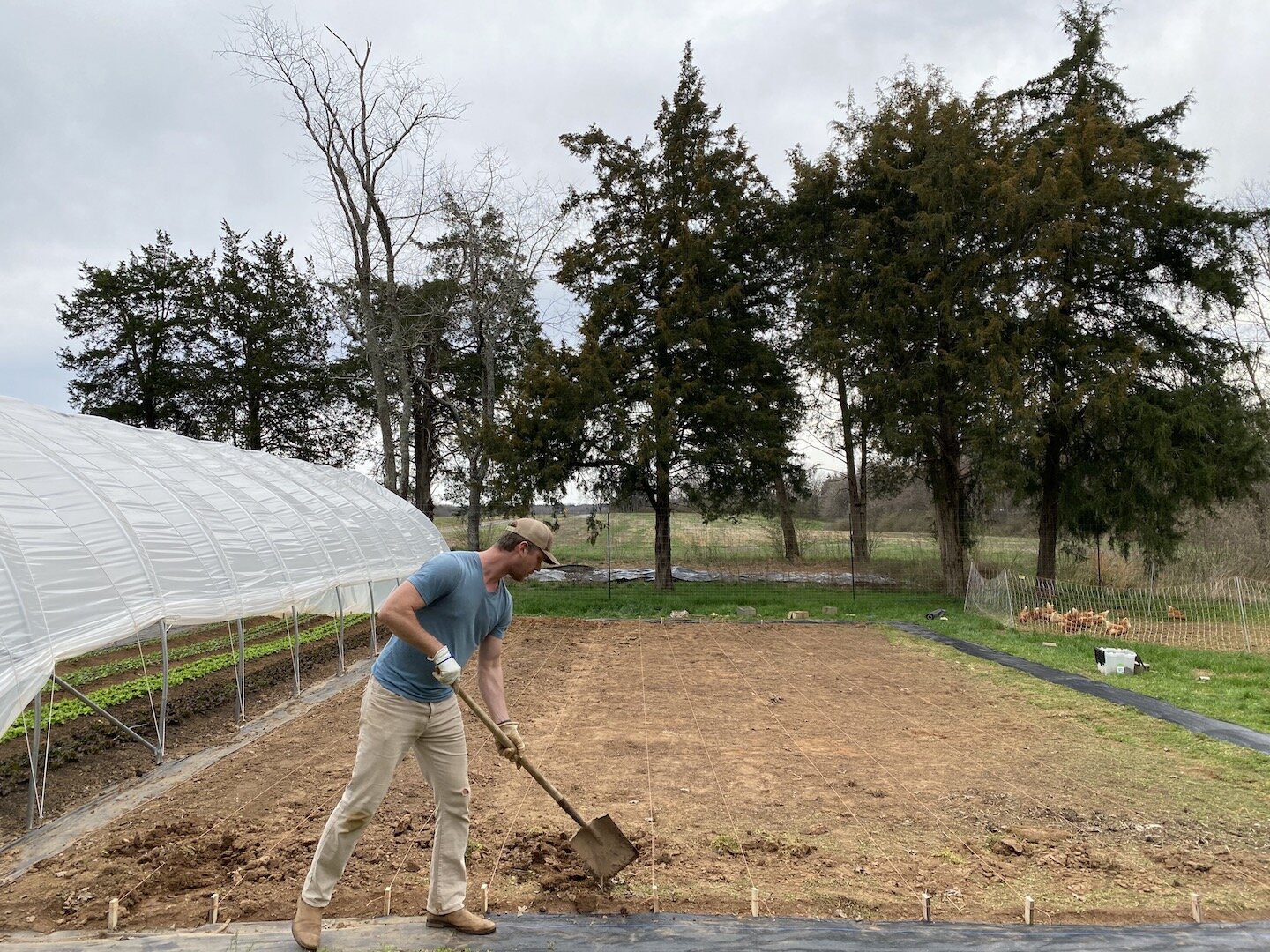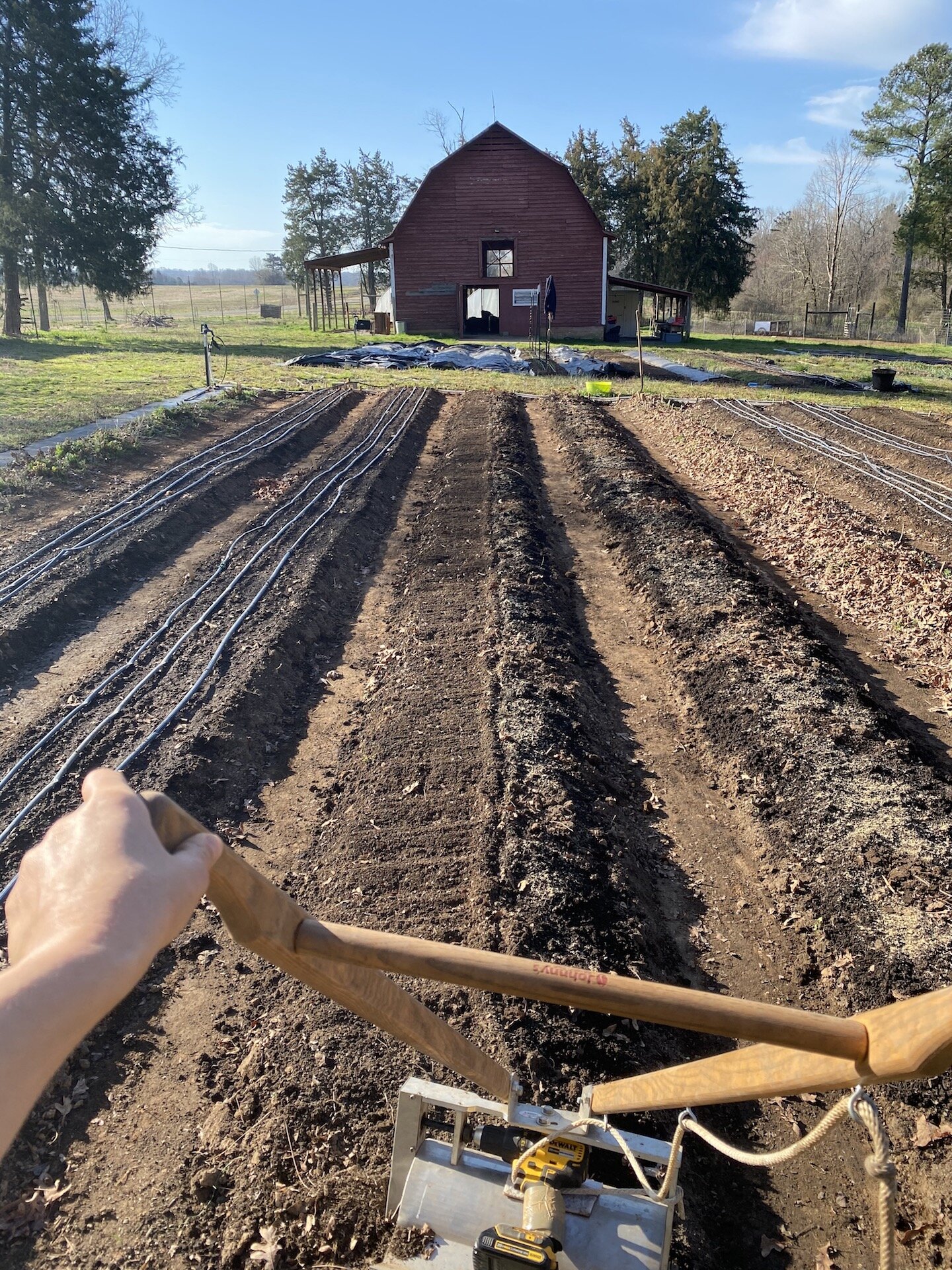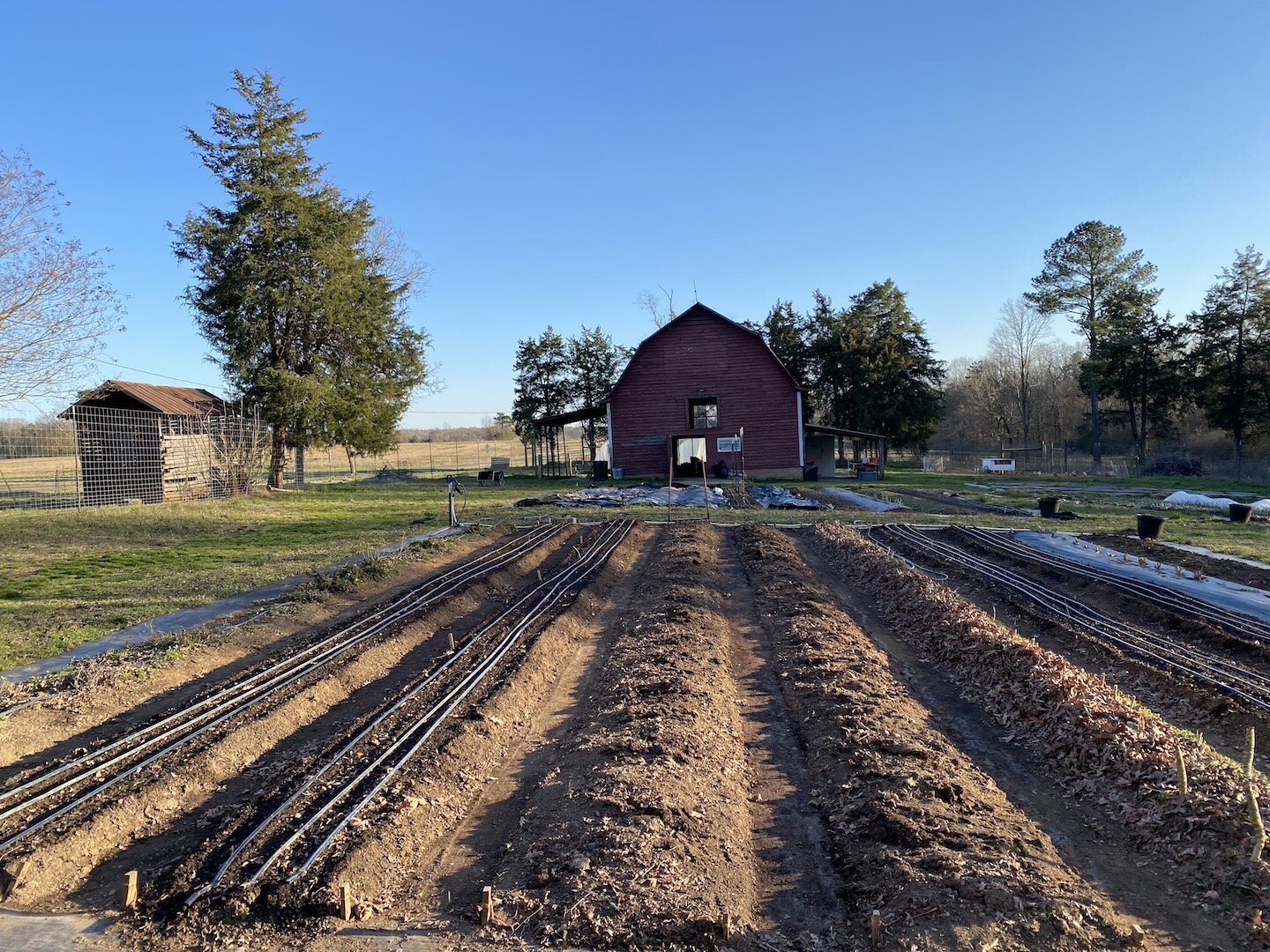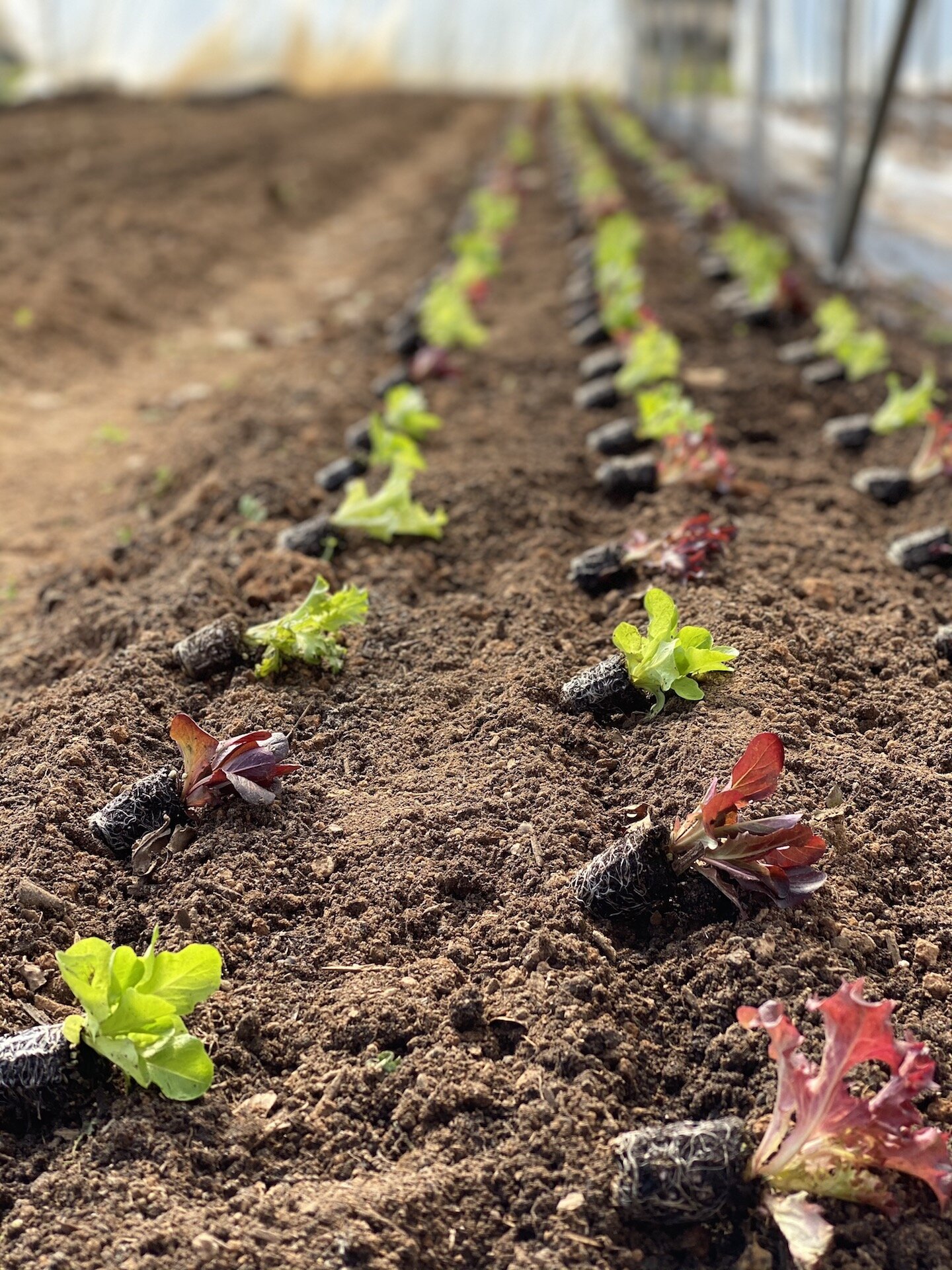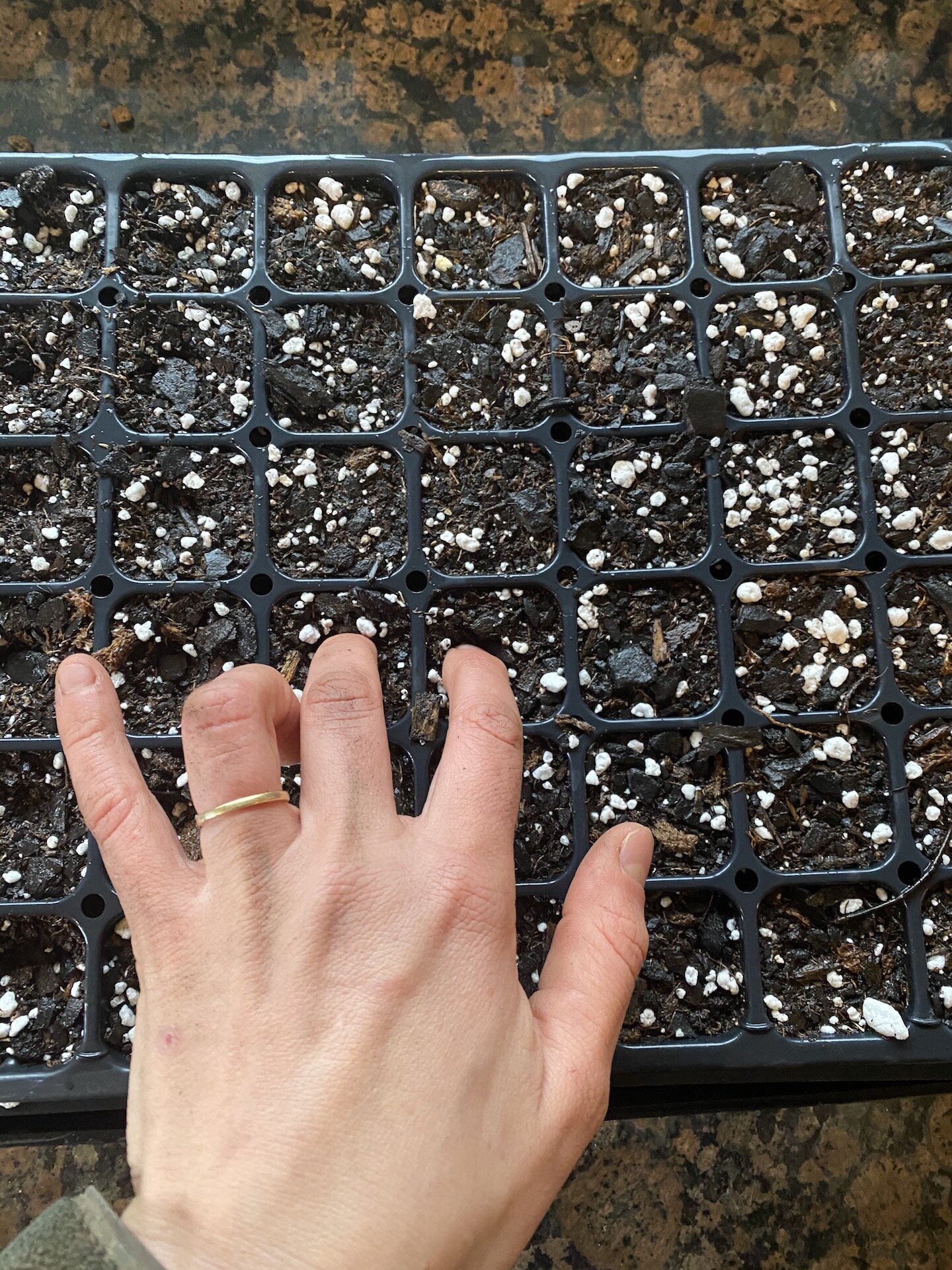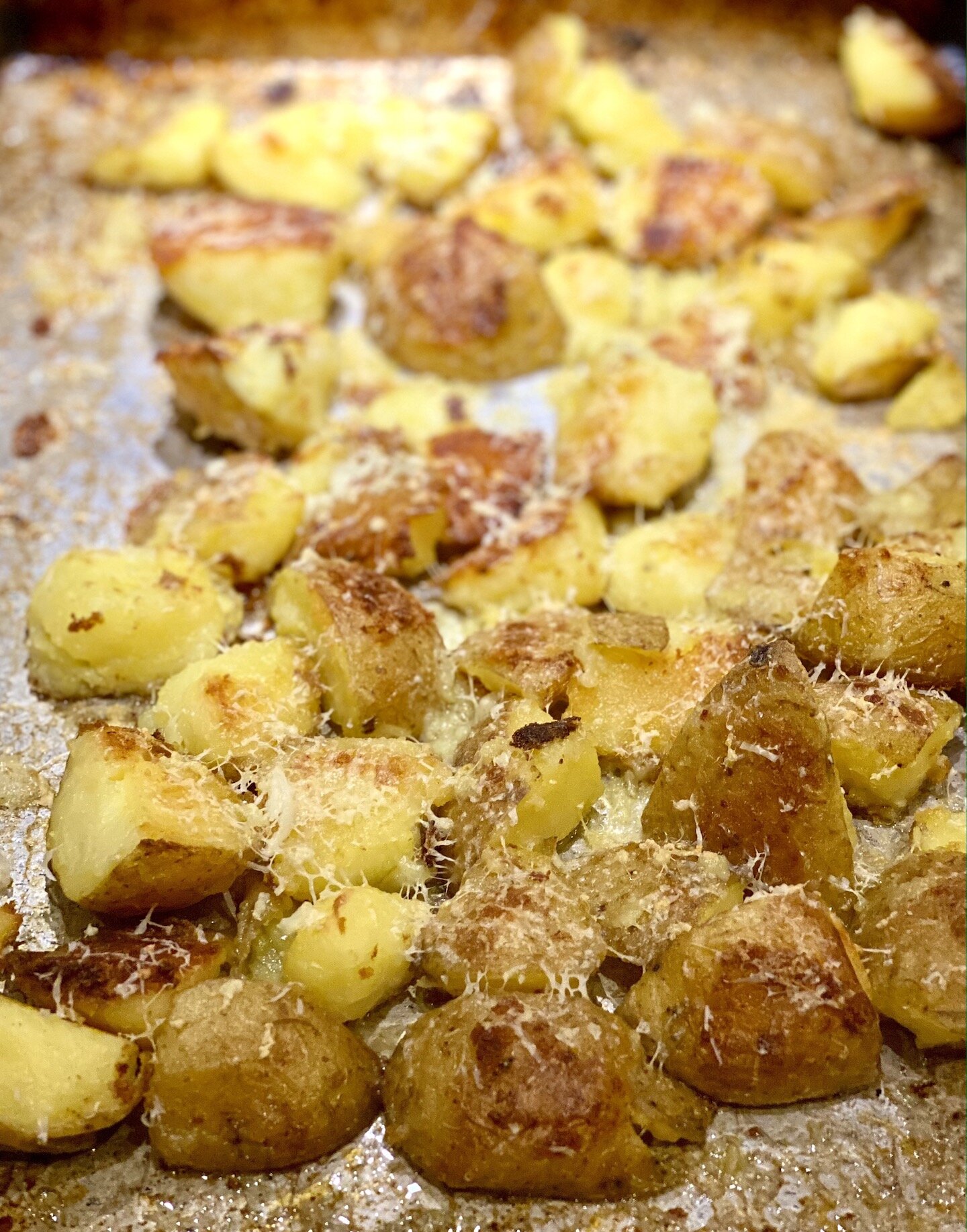Farm Notes
After accidentally whacking myself in the head with a shovel during the farmstand last Tuesday, I’m happy to report that yesterday’s farmstand went smoothly and without any head injuries! Jokes aside, it was a gorgeous day, and I’m really proud of all the veggies we’ve been able to share with our community this spring – SO much lettuce, radishes, turnips, kale, swiss chard, pac choi, edible flowers, etc with lots more to come…
Speaking of which, while we’re harvesting all this spring goodness, we’re also hustling hard to get all our summer plants in the ground! This week, we will finish planting our tomatoes, and we’ll get started on planting our peppers, eggplant, zucchini, cucumbers and basil. The 10-day forecast looks warm and no signs of frost ahead, so we are moving forward to summer in full force!
A reminder that this Friday at 12pm EST I’ll be hosting our weekly Farm Walk just for Farmbelly Club members! This week I’ll give an update on all our new summer plantings (with tips about ideal spacing for summer veggies in your garden), how/why we fertilize our plants with fish emulsion, and my favorite edible flowers (which you can grow at home)!
There are now THREE ways to watch these weekly virtual farm walks:
1) Tune in live on Zoom (this link will be the same every week)
2) The video will be broadcast live to our private Facebook group page. If you can't join the live call, the video will be recorded and saved on the Farmbelly Club Facebook group page, where you can watch back at any time.
3) If you’re not on Facebook and want to watch the recorded videos, I’m now archiving all the Farm Walks in this google drive folder (let me know if you have any trouble accessing this folder).
Kitchen Notes
I was extra excited to cook dinner tonight, because I’ve been dreaming about this Sesame Noodle Salad that I used to make when I worked at Flagstone Pantry in Santa Barbara, and it’s as good as I remembered! It comes together super quickly and it’s very forgiving – feel free to swap out some of these veggies (cucumber, carrots, scallions) with whatever you have on hand (like radishes, turnips, sugar snap peas, steamed broccoli, etc). If you’d like some extra protein, it pairs well with some marinated steak, chicken, fish, or tofu. Also! This salad is great at room temp, so you can totally make it ahead and enjoy whenever you’re ready.
Sesame Noodle Salad
INGREDIENTS
1/4 cup honey
1/4 cup soy sauce
1 tablespoon sesame oil
1 pound soba noodles, cooked until tender (or use whole wheat spaghetti or udon noodles)
1/2 cup green onions, thinly sliced on the bias
1/2 cup carrots, thinly sliced on the bias
1/2 cup cucumber, peeled, seeded, and thinly sliced or diced
1 cup dry roasted peanuts or cashews
Handful chopped fresh cilantro (and/or mint)
2 tablespoons black (or white) sesame seeds
INSTRUCTIONS
In a small bowl, whisk together honey, soy sauce, and sesame oil.
In a larger bowl add the cooked noodles with the green onions, carrots, cucumber, peanuts, cilantro/mint, and sesame seeds. Pour over the soy sauce mixture, mix thoroughly and enjoy!
Today’s Stats
Low temp: 57F
High temp: 82F
Sunrise: 6:45am
Sunset: 7:50pm
Moon phase: Waxing Crescent
Additional notes: Sunny, breezy and beautiful all day.













